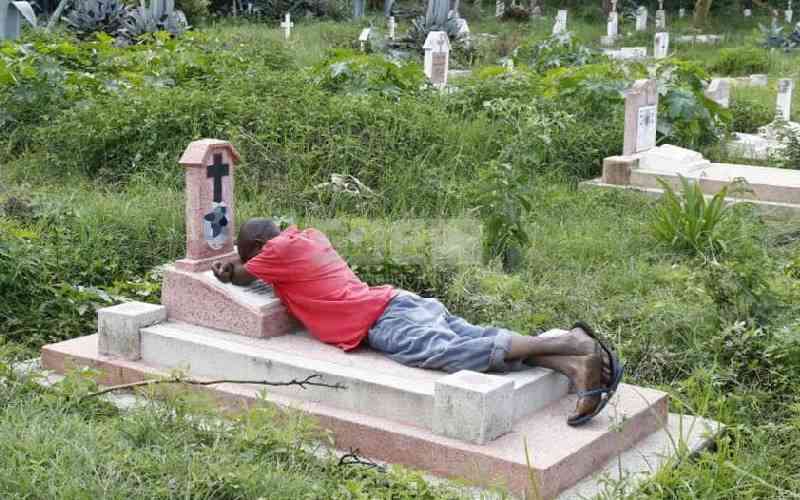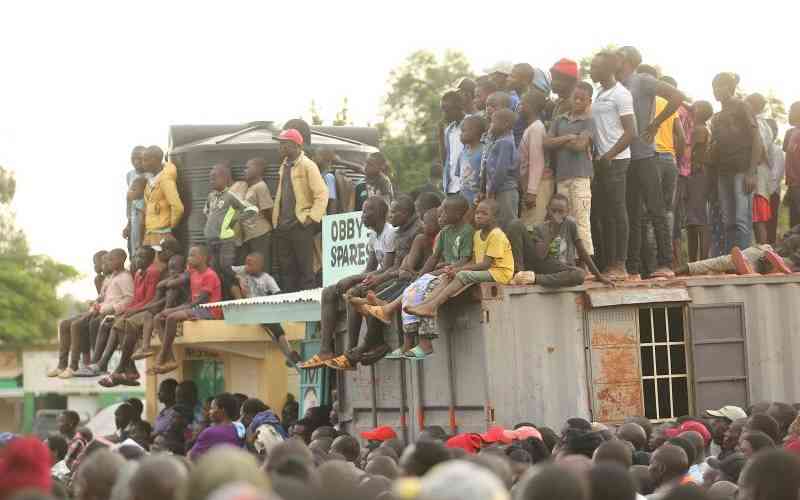When the initial mediation to end the biggest public health crisis in Kenya flopped, the court gave religious leaders a chance to reconcile the striking doctors and the State.
Charged with this ardous task was the Inter-Religious Council of Kenya. With nine members (five Christian, three Muslim and one Hindu), one of the council’s functions is to integrate health and wellbeing into spiritual practice, with the aim of empowering religious leaders to become reliable public health educators.
Considering the council’s priority areas include maternal and child health, sexual and reproductive health and nutrition, the striking doctors hoped council members were aware that the 2013 CBA will take more than prayers, guilt trips, shame campaigns and good intentions to implement.
A document on pharmaceutical policy commissioned by the Kenya government in 2008 noted the World Health Organisation estimates that an overwhelming majority -- 80 per cent -- of Africans use traditional medicine in one way or another. In a review of the status of the Kenyan practice of alternative medicine, Benson Muriuki and co. state that prayers are considered an important part of disease management, whether one is on western medicine, traditional medicine, both or neither.
This thought focused on the Christian faith, but can obviously find traction regardless of one’s religion. J Lambert and co, in a survey of traditional practitioners, observed that spiritual healing is viewed as important by Kenyans in managing issues around mental health, particularly stress and depression. There is a clear deduction, therefore, that while western medicine may define some elements of wellbeing, its major strengths are in the physical realm. Patients have felt for a long time that their holistic needs cannot be met by pills, prescriptions and procedures alone, given the rising worldwide popularity in alternative health practices.
Extinction of local knowledge
The impact of colonialism was irreversibly felt by indigenous African healthcare, and was instrumental in the violent interruption and extinction of local knowledge bases around herbs and other medicines. In many cases, the combined force of political and Christian religious supremacy resulted in the outright ban of local medicines and medical practitioners, who came to be labeled as witches. This reflected the general view of Africa as the “Dark Continent” and Africans as primitive, backwards, and inherently evil, worthy of the combined efforts of Christianity and the British colonisers to sanitise and civilise.
The deliberate design of an unequal power dynamic persists in the current reluctance of mainstream medical organisations to allow hybridisation with other forms of health practice, despite the realities on the ground. This is evident in Kenya, with herbalists and alternative practitioners receiving little help from the mainstream healthcare givers in their lobby to be progressively and functionally included in Kenya’s health policy discussions.
A point of further interest is the room some African universities and research bodies are giving to the study of alternative health. Here, Kenyatta University and Kenya Medical Research Institute have strategically prioritised deep investigation of herbal remedies with a view of extracting, documenting, archiving and commercialising any resulting pharmacological products.
Ali Azareem Abdullahi, in a study of trends and challenges of African Traditional Medicine, notes the formation of the Nigeria Natural Medicine Development Agency to not only conduct relevant research but fast-track the integration of traditional medicine into allopathic health, as has been the case in China and India. These two countries have huge populations – over a billion people each - and cover vast areas of land. Bhushan Patwardhan and co describe Ayurveda, which is Indian traditional medicine, and Chinese traditional medicine as ancient living traditions which have been deliberately promoted in their countries and abroad by their governments, alongside and sometimes over and above western medicine.
The Chinese had been using artemisinin-based malaria treatment for centuries while the rest of the world struggled with the alarm of increasing quinine resistance. As the Chinese populate the African skyline with skyscrapers and shadow our futures with debt, we shall see more Chinese medicine and health practice, and it will be interesting to see the combinations of local and Eastern practice on the people who are willing to be experimental about their health seeking behaviour. But what is the specific place of faith in modern medical practice? There is as much data taunting positive associations as there is taunting neutrals or negatives, especially when it comes to matters around mental health conditions and control of behavior such as substance dependency and addiction.
The involvement and investment of the divine and the supernatural in the occurrence of miracle healings has not lent itself to easy understanding. It is as likely that people of faith are healed by prayer as not, or even that people with no spiritual loyalties or affiliations experience complete obliteration of symptoms without any conscious spiritual intervention. Nicollete Manglos and co, exploring faith healing and HIV in Malawi, describe this dissonance as “bodily healing as a major locus for the struggle for power.”
This, in essence, implies that people will go to whoever will promise to return their bodies to a state of health and wellbeing, regardless of who these people are.
Some belief systems actively refuse certain interventions of modern medicine – the selective refusal of blood transfusions by Jehovah’s Witnesses even when faced with imminent death is well known the world over. The place of faith in reproductive health is also continuously contentious. Until 1930, the Christian church was universally united against contraception of any description, and the Lambeth Conference of that year found the Anglicans beginning to relax their absolute stance against it.
Complicated procedures
Stay informed. Subscribe to our newsletter
Today, only the Catholic Church (and scattered cults) maintains a strict refusal of all artificial contraception. Where there is conflict between faith and modern medicine, the decisions have remained largely individual, and because these are such personal and intimate matters, it remains unlikely that people would tell the truth even if data were to be collected to try to explore this further. People will work for or against faith or modern medicine in line with their own conscience – admitting and discussing these choices can threaten their social status, and nobody wants to be considered ignorant or foolish.
It remains a fact that worldwide, people consistently return to alternative medical practitioners because they cost less and because the distance between them and their caregivers is not widened by scary machines and complicated procedures.
Complementary care is also viewed to be safer. St John’s wort for depression and capsaicin cream for osteoarthritis have been singled out by the WHO as having fewer perceived side effects by patients than the drugs usually prescribed for these conditions by doctors, even though their ability to eliminate symptoms entirely is still under investigation.
As there is no way to eliminate this hybrid approach to healthcare by humanity, it is important that we enter these spaces not to radicalise the public with gospels of either/or, but to encourage wider public dialogue on progressive, inclusive approaches that centre individuals and their safety over everything else.
Finally, as Africans we should also embrace the open opportunities to reclaim our pasts and build better futures by holistic integration of our traditional herbal and material medicine practices, and our spiritual wherewithal, for wider healing of our populations.
[email protected]
Twitter: @njokingumi
 The Standard Group Plc is a
multi-media organization with investments in media platforms spanning newspaper
print operations, television, radio broadcasting, digital and online services. The
Standard Group is recognized as a leading multi-media house in Kenya with a key
influence in matters of national and international interest.
The Standard Group Plc is a
multi-media organization with investments in media platforms spanning newspaper
print operations, television, radio broadcasting, digital and online services. The
Standard Group is recognized as a leading multi-media house in Kenya with a key
influence in matters of national and international interest.
 The Standard Group Plc is a
multi-media organization with investments in media platforms spanning newspaper
print operations, television, radio broadcasting, digital and online services. The
Standard Group is recognized as a leading multi-media house in Kenya with a key
influence in matters of national and international interest.
The Standard Group Plc is a
multi-media organization with investments in media platforms spanning newspaper
print operations, television, radio broadcasting, digital and online services. The
Standard Group is recognized as a leading multi-media house in Kenya with a key
influence in matters of national and international interest.






